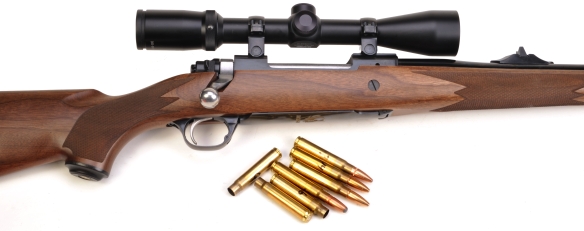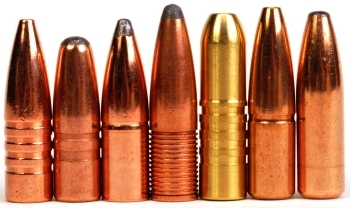
Spending time with the Ruger African and the 9.3x62mm was like wrapping up the week in the company of an old friend. The 9.3 is a big shooting cartridge. More of a boom than a crack of report. Big push of recoil, not a smack. Muzzle climb, but not the same as a 375 H&H lightweight. Probably closer to a 338 Winchester Magnum, but less sharp. I went through a couple of boxes of full tilt loads on the last day of the project without incurring a sore shoulder or a pressure wave headache, but it is the kind of gun that would instill confidence no matter what game animal was being hunted.
Handloading
The cartridge is a good one for handloaders because it is responsive to even modest component changes. My handloads tend to run to the hot side when loading for modern bolt action rifles because the standard cartridge pressure, a bit over 56,000 PSI, is relatively soft and 60,000 PSI to 61,000 PSI tends to make a considerable difference in performance. The low end of the weight spectrum, 250 grain is not rocket fast, maybe 2600 fps, and the big 325 grain bullets can still muster nearly 2,400 fps. The 9.3mm behaves a bit like a medium bore equivalent of the .45-70 Gov’t cartridge; never a rocket ship with lighter bullets, but not much slower with the heaviest weight.
The 9.3x62mm handload data that appears in the handload section of RealGuns was first developed with a CZ-USA Full Stock, 20½” barrel gun that has since been converted to the .375 Ruger. The Ruger African’s longer 23″ barrel is a measureable influence and delivers the type of performance most often attributed to this cartridge. So we reshot the loads listed and added several others that did not appear in the original load data sheet.

Pictured left, left to right order, Barnes Triple Shock 250 grain, Prvi SP 285 grain, Nosler Partition 286 grain, North Fork Premium Bonded 286 grain, Barnes Banded Solid 286 grain, Woodleigh Protected Point 320 grain, and Norma Oryx 325 grain.
There are a many good bullets available for 0.366″ guns. Those that are addressed here cover just about every probably hunting application with the exception of jack rabbits.
It is interesting that a number of solids are available for the 9.3x62mm and that bullet manufacturers are not bashful in recommending them for serious game. As an example, Barnes recommends their 250 grain TSX for everything up to cape buffalo and the banded solid 286 grain up through elephant. In most cases I would take this with a grain of salt, but Barnes is an organization with a lot of field experience. No, I would not go elephant hunting with the 9.3x62mm. I can’t run that fast in the event I didn’t place a shot well and, as a purely personal preference, I wouldn’t shoot an elephant.
From experience garnered during load development, I would only load down to the minimum side of load data if I were hunting deer relatively close in and really wanted to take the heat off the round. Any of the minimum loads I put together demonstrated a disproportionately large drop in velocity from maximum loads; 325 grains at 1,900 fps is not my idea of hunting rifle ballistics. Crimping where possible had a marked effect on consistency of velocity and almost always a positive change that was measureable.
Wrapping up…

If there is any comment I can make about this rifle – cartridge combination it would be that it is worth a close look. It strikes me that the shooting community has given up a lot of what use to be one of its most identifying characteristics, individuality. Now it seems there is the inevitable lemming like rush to whatever is new or a trend as established by someone of celebrity. For folks who still look at ballistic tables and select based on hunting application, I think the 9.3x62mm hold up well. More than enough power for anything in North America, none of the shooter abuse of a big magnum, inexpensive to shoot and… it’s a really good looking gun.
Ruger M77 Hawkeye African 9.3x62mm Part I
Ruger M77 Hawkeye African 9.3x62mm Part II

Email Notification